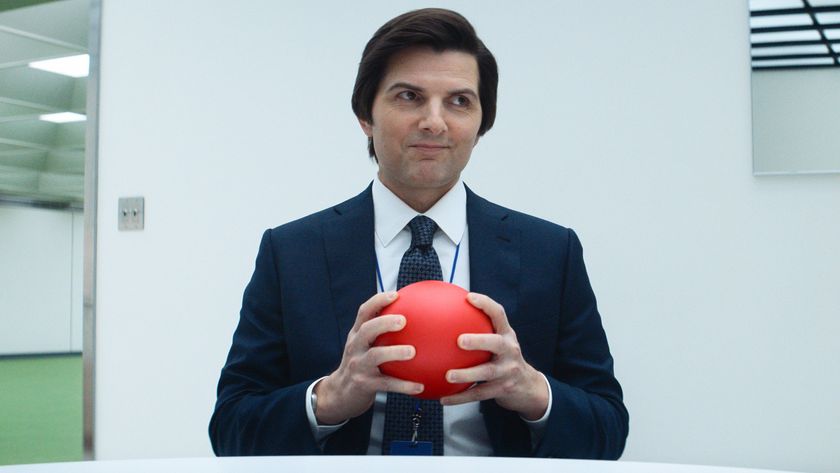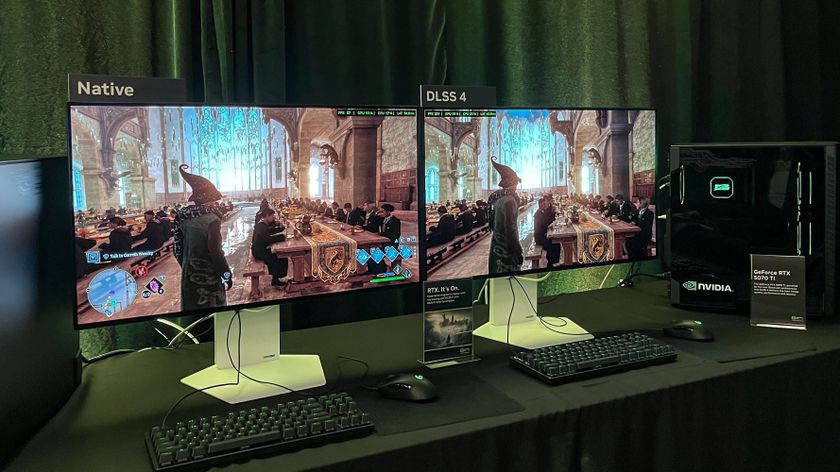Samsung Galaxy S24 has a new Apple AirDrop rival — and that’s a huge deal
The new Quick Share could be a good sign of things to come

The Samsung Galaxy S24 is arriving with a lot of new features, especially in the AI department, but there’s one big change that might have passed you by. Google has confirmed it will be the first phone to come with the new Quick Share feature, which was announced at CES earlier this month, which is set to merge the existing Samsung Quick Share with Google’s Nearby Share.
The idea here is that Google and Samsung are working together to create a new and improved way to quickly share files from Android phones. So the new sharing feature should offer the best both companies have to offer, and in an ideal world give Apple’s AirDrop a run for its money.
Frankly, that’s the kind of thing we need to see more of in Android.
Android fragmentation is its biggest weakness

When it comes to iPhones, there’s only one company calling the shots: Apple. Those are the benefits of maintaining exclusivity on a supremely popular device and controlling every aspect of its existence. When it comes to Android everything is a lot more fragmented and that proves to be one of the system’s key weaknesses..
Google might develop the core Android software, but the operating system is available to just about any phone maker that wants it — with some flexibility to change things as they see fit. That semi-decentralized approach has already proven to be an issue when it comes to rolling out new updates, and can hold the system back when it comes to matching what Apple can do.
For starters, Apple having a head start with an insanely useful feature like AirDrop gives it a major advantage. So while Google scrambles to catch up with its own version, Apple has the time to offer upgrades and improvements — like proximity-based sharing or AirDrop over the internet.
At the same time you also get Android phone makers making their own version of it just for their devices — like Samsung did with Quick Share — further fragmenting the whole process and adding multiple redundant features to upcoming phones.
But shouldn’t someone figure out a way to standardize all this stuff and create a single standard that covers every use case? They could, but as xkcd pointed out many years ago this inevitably leads to an increased number of competing options. Because if phone makers won’t see eye to eye, they won’t want anything to do with this amazing new software feature you claim to have improved.
That’s why Google and Samsung joining forces on the new Quick Share is such a big deal. These are both two of the most important companies in the Android ecosystem figuring out that their software will be better if they work together. Merge two standards together to create one even better one.
Plus Quick Share is a much better name. Simple, snappy and doesn't need any additional explanation.
Quick Share 2.0 could fix Android’s AirDrop problem

One of the things I always liked about Nearby Share is that it isn’t Android-exclusive anymore. It took forever for Google to create a solid competitor to AirDrop, something Android Beam could never claim to be, but Nearby Share quickly spread to both ChromeOS and Windows. The ease in which I was able to send files from my phone to my laptop offered the kind of satisfaction I assume iPhone and Mac users have felt for the past 13 years.
It didn’t work quite so well going the other way round, and I still struggle to send files to my Pixel 6 Pro via Nearby Share from both my Windows 10 laptop and other Android phones I have lying around. It’s not a rage-inducing experience, but it never works right the first time. Or often the second or third for that matter.
The thing is that right now we don’t know what the new Quick Share will be like, and whether it has more DNA from Nearby Share or the previous Samsung-only Quick Share. But I supposed it doesn’t really matter one way or the other. All QuickShare 2.0 needs to be a success is to offer a better file sharing service than its predecessors and hopefully offer something faster and more streamlined.
Will it be able to outmatch 2024’s AirDrop right away? I’m going to assume not, but that’s not to say it couldn’t be a good starting point for Android to prominently feature something that iPhone and Mac users have been able to enjoy for the past 13 or so years.
Though it will hinge on both Samsung and Google continually investing in Quick Share to keep making the experience better. It’s not clear how that will happen, and which company will handle the various responsibilities involved. But they are two big companies that certainly have the resources to add more features and functionality as time goes on.
Perhaps we can see Android sharing initiated by proximity, or the option to send large files over the internet the way AirDrop can now handle. Heck, I’d like to be able to share files between my personal devices without having to be sitting right in front of them all the time or resorting to cloud storage. If apps like Pushbullet have been doing it for over a decade, Google and Samsung should be able to manage it.
A sign of things to come?

The iPhone has a huge advantage over Android just from its very nature. Basically what Apple wants to do gets done, and spreads to everyone almost right away — aided by the fact there are only a couple dozen devices supported at any given time. Meanwhile Google attempting the same with Android is like running a race through treacle.
New software and updates will get somewhere eventually, but it’s going to take quite a while to hit the finishing line. And the results won’t exactly be clean. Sure, Android’s main benefit is that you have a seemingly infinite amount of choice when it comes to buying a new device. But the software rollout is pretty weak, and it’s not helped by the fact phone makers may simply take matters into their own hands and flood the market with their own offering.
Google and Samsung working together on a single feature can’t solve this problem in its entirety. But it does mean that two of the biggest players can combine resources to improve a feature in a way that could help minimize Apple’s decade-plus head start. And hopefully things work out for the best. Not just for the benefit of Android users, but also so that other, similar collaborations may happen in future.
It all counts on you then, Samsung Galaxy S24.
More from Tom's Guide
Sign up to get the BEST of Tom's Guide direct to your inbox.
Get instant access to breaking news, the hottest reviews, great deals and helpful tips.

Tom is the Tom's Guide's UK Phones Editor, tackling the latest smartphone news and vocally expressing his opinions about upcoming features or changes. It's long way from his days as editor of Gizmodo UK, when pretty much everything was on the table. He’s usually found trying to squeeze another giant Lego set onto the shelf, draining very large cups of coffee, or complaining about how terrible his Smart TV is.
























